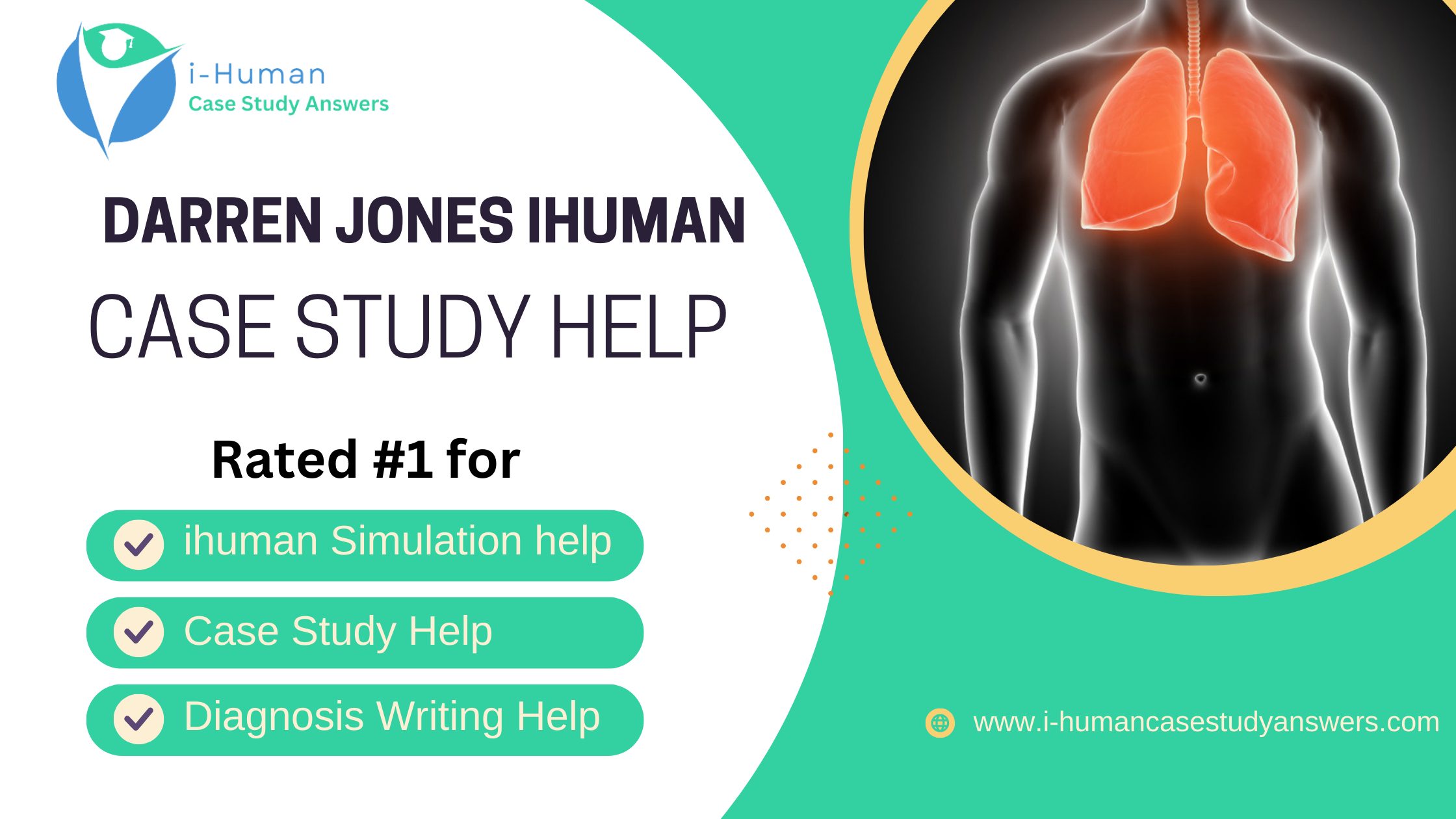The iHuman platform offers a dynamic and immersive learning experience for medical and healthcare students, enabling them to simulate real-life patient encounters. One such case study featured on this platform is that of Darren Jones, a patient presenting with complaints of dyspnea. This article aims to provide a comprehensive guide on understanding and tackling Darren Jones ihuman case, emphasizing the importance of a systematic approach to diagnosis and management.
Table of Contents
Darren Jones iHuman Case Study Guide
Understanding the Chief Complaint
Darren Jones presents with dyspnea, a medical term for difficulty or labored breathing. The chief complaint is the first clue in the diagnostic process and should be thoroughly explored to gather as much relevant information as possible.
Key Components of the History of Present Illness (HPI)
A detailed HPI is crucial for forming a differential diagnosis. For Darren Jones, it’s essential to ask specific questions, including:
- Onset and Duration: When did the shortness of breath start? Has it been constant or intermittent?
- Triggers and Relievers: What activities or situations worsen the dyspnea? Is there anything that relieves it?
- Associated Symptoms: Are there any accompanying symptoms such as chest pain, cough, wheezing, palpitations, or fever?
- Impact on Daily Life: How has the dyspnea affected his daily activities and quality of life?
Past Medical and Family History
Understanding Darren’s medical background can provide context and help narrow down potential causes of dyspnea. Key areas to explore include:
- Respiratory History: Any history of asthma, COPD, pneumonia, or other respiratory conditions.
- Cardiovascular History: Any known heart conditions, hypertension, or past cardiac events.
- Surgeries and Hospitalizations: Any past procedures or hospital stays related to respiratory or cardiac issues.
- Family History: Any family history of respiratory or cardiovascular diseases, which could indicate a genetic predisposition.
Social History
Social determinants of health are critical in understanding the patient’s overall risk factors and lifestyle influences:
- Smoking: Current or past smoking habits, including duration and quantity.
- Alcohol and Drug Use: Frequency and amount of alcohol consumption, and any use of recreational drugs.
- Occupational Hazards: Job-related exposures to respiratory irritants or hazards.
Physical Examination
A thorough physical exam is necessary to identify clinical signs that support or refute potential diagnoses. Key findings to document include:
- Vital Signs: Respiratory rate, oxygen saturation, heart rate, and blood pressure.
- Lung Sounds: Presence of wheezes, crackles, or other abnormal sounds.
- Cardiovascular Exam: Heart sounds, presence of murmurs, and signs of heart failure like edema.
- General Appearance: Signs of respiratory distress, cyanosis, or other abnormalities.
Darren Jones iHuman Case Study Differential Diagnoses for Dyspnea
Based on the HPI and physical exam, a list of differential diagnoses should be developed. For Darren Jones, possible conditions include:
- Asthma: Look for a history of episodic wheezing, cough, and response to bronchodilators.
- Chronic Obstructive Pulmonary Disease (COPD): Consider if there is a long history of smoking and chronic bronchitis or emphysema.
- Congestive Heart Failure (CHF): Evaluate for signs of fluid overload, orthopnea, and paroxysmal nocturnal dyspnea.
- Pulmonary Embolism: Consider if there is sudden onset dyspnea with risk factors such as recent surgery, immobility, or a history of clotting disorders.
- Pneumonia: Look for fever, productive cough, and localized lung findings on auscultation.
- Interstitial Lung Disease: Consider if there is a history of occupational exposure or autoimmune diseases.
Reflection and Learning Points from Darren Jones iHuman Case Study
After completing the case study, it is essential to reflect on the process, noting the key learning points and challenges encountered. This reflection helps in consolidating knowledge and improving clinical reasoning skills. Students should consider:
- Chief Complaint Summary: A concise summary of Darren’s presenting symptoms.
- Key Findings: Important findings from the history and physical exam that guided the differential diagnosis.
- Learning Points: Any new information learned or skills improved during the case study.
- Challenges Faced: Difficulties encountered and how they were addressed.
Conclusion
The iHuman platform, with cases like Darren Jones, offers a valuable learning opportunity for students to practice and refine their clinical skills in a simulated environment. By systematically approaching the case with thorough history taking, physical examination, and development of differential diagnoses, students can enhance their diagnostic accuracy and clinical reasoning. For expert assistance with iHuman case studies, visit i-humancasestudyanswers.com to get professional support and ensure comprehensive learning.



